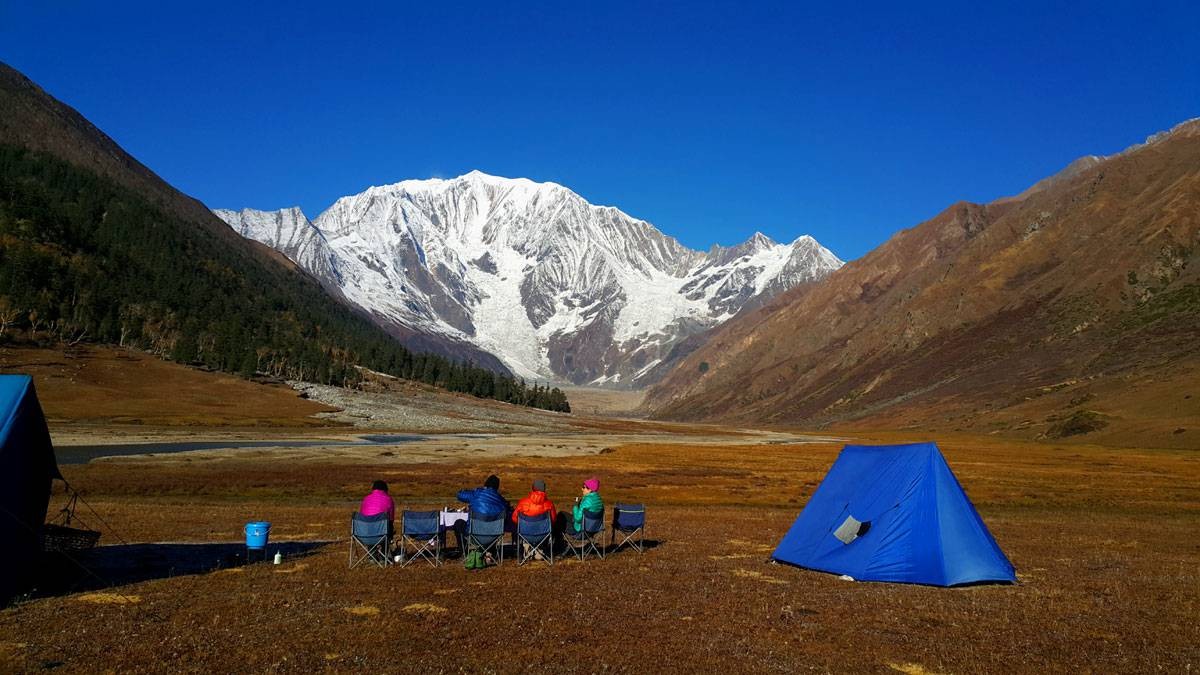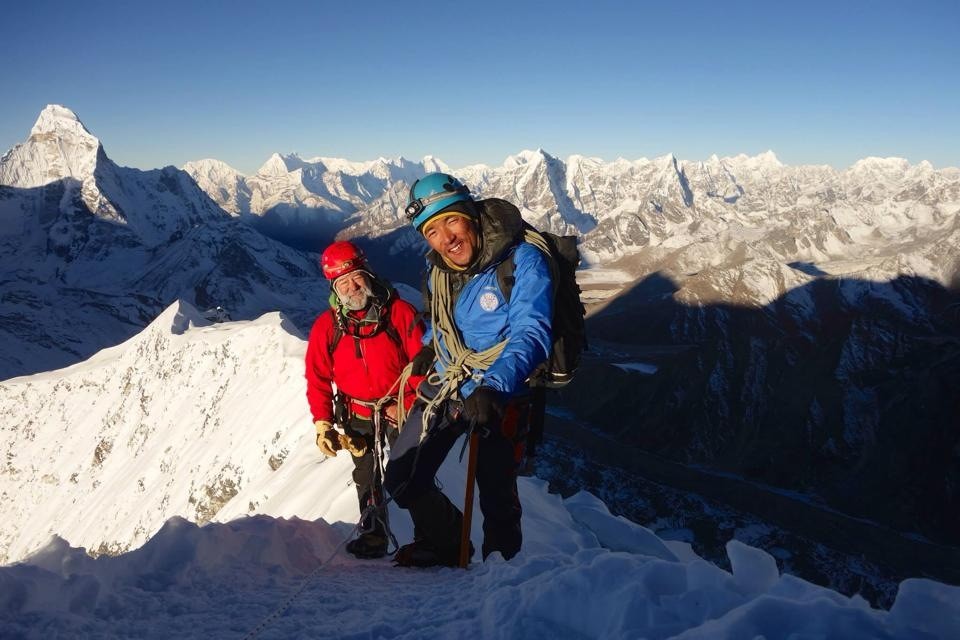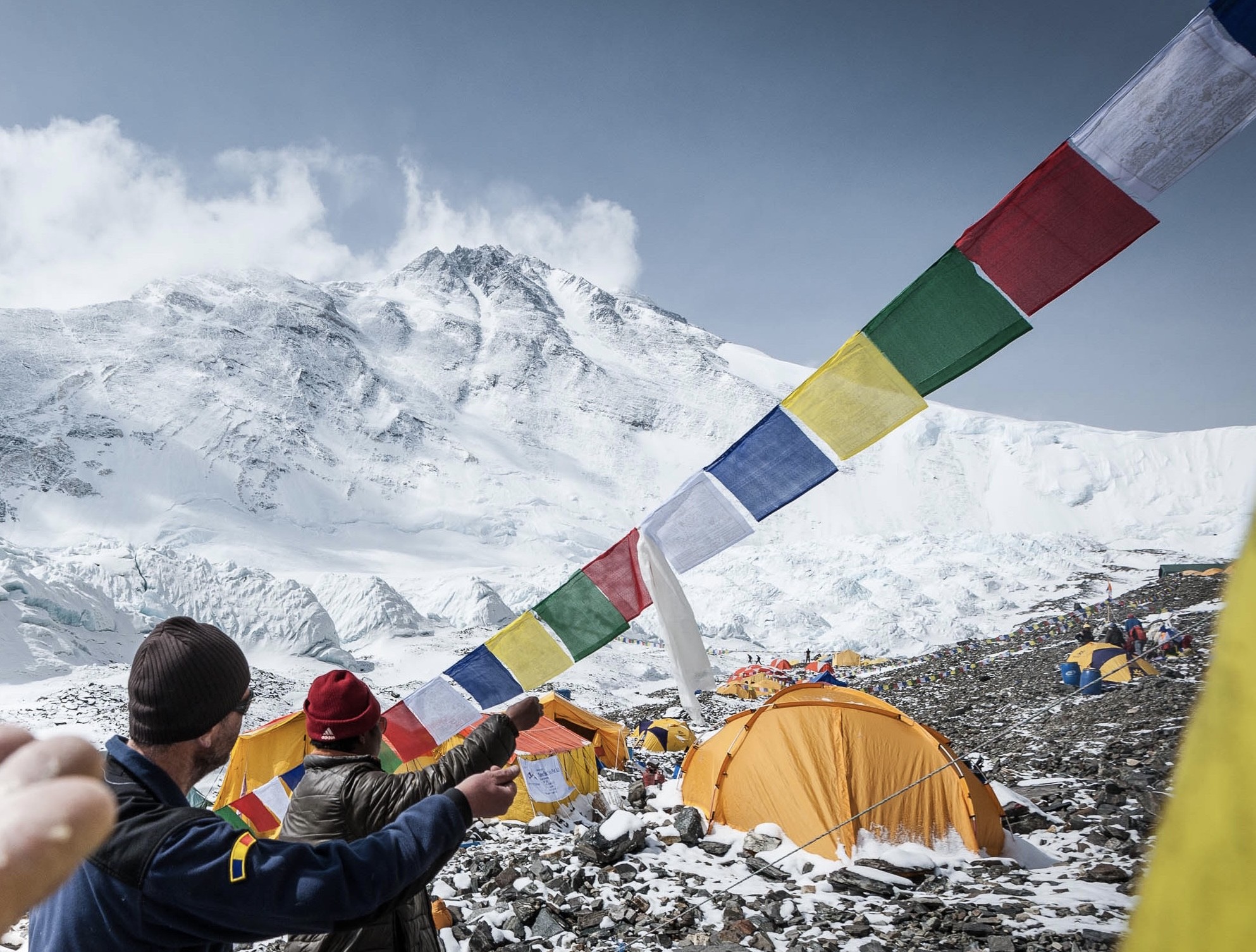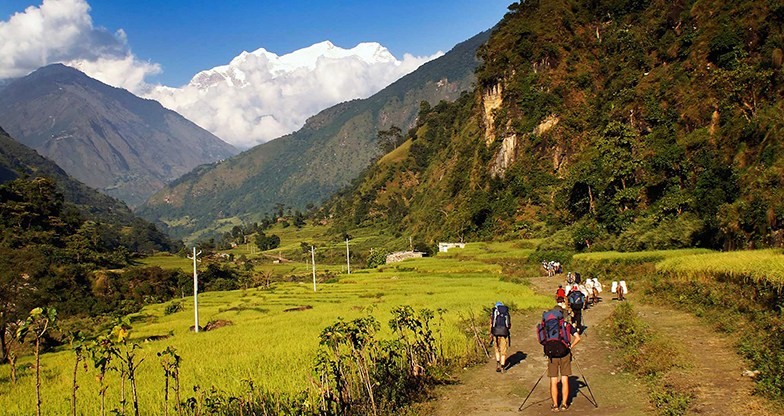

Far western Nepal is one of the lesser-traveled areas of Nepal. Among the famous landmarks of this region are Mt. Api (7132m) and Mt. Saipal (7031m). The Api Saipal Trek is for people who want to explore uncharted areas and love the tranquil environment of the Himalayas. This trek is for those adventure lovers who want to visit a remote and unspoiled area of Nepal. The name Api comes from the Tibetan word, which means grandmother. This route is still off touristy and very few tourists have visited this area. The Api Saipal Himal region in Darchula, Nepal, is a remote paradise that offers breathtaking landscapes, rich cultural experiences, and diverse flora and fauna. Whether you’re an adventurous trekker or a nature enthusiast, choosing the right time to visit this enchanting area is crucial for a fulfilling experience
This trek unfolds a breathtaking Himalayan panorama, showcasing peaks like Kap Chuli (6680 m), Nampa (6611 m)-I, II & III, Bobaya Chuli (6808 m), Jethi-Bahurani (6850 m). Despite its remote and untouched beauty, few have ventured here. Experience the warmth of locals, cross rapid rivers, and witness the Holy Lake of Kalidhunga amid stunning landscapes. The journey offers rich biodiversity, serene wilderness, pristine forests, off-the-beaten paths, virgin nature, and a mysterious culture. This venture promises a heavenly experience, navigating through extreme geographical conditions and varying elevations.Adventure off the beaten track through a stark contrast of many terrains and authentic wilderness far from modern civilization. The Api Himal region in Darchula, Nepal, is a breathtaking destination that offers unique experiences throughout the year.

Trip Highlight
DAY
1
DAY
2
DAY
3
DAY
4
DAY
5
DAY
6
DAY
7
DAY
8
DAY
9
DAY
10
DAY
11
DAY
12
DAY
13
DAY
14
DAY
15
DAY
16
DAY
17
DAY
18
Trip Start: 2025-10-10
Trip End: 2025-03-24
spots available
Trip Start: 2025-11-10
Trip End: 2025-03-23
spots available
The main emphasis while trekking is on keeping warm and dry while still being lightweight. You should bring a rucksack or backpack for the gear required during the day. Your pack should contain items such as warm clothes, a jacket, a camera, water bottles, a personal first aid kit, and snacks. The weight limit is 5kg. A porter will carry the rest of your personal equipment packed in a duffel or kit bag. The weight limit for your duffel bag is 15 kg however it is different in the case of peak climbing and expedition.
A Note on Packing
For your international flights, we recommend that you pack all your equipment in your two duffle bags or suitcase. Do not simply pack your backpack (since the straps can be damaged by the baggage handling machines). It is important to lock these bags for their trip. Depending on the airport, you may be able to put your travel locks on after TSA has searched the bags. If not, Lock the bags with Zip Ties. If the TSA cuts off the zip-tie to search your bag, they will replace it. You will still need the travel locks to lock your bags in the hotel and during the trek. Generally, you will take one duffel on the trek , and leave one in the hotel in Kathmandu with your belongings for your time in the city. Your trek in duffel will only be accessible in the evenings (with items such as changes of clothing, sleeping bag), and your day pack will hold vitals such as water, layering, blister kit, and camera.
FOOTWEAR
Conclusion:
As the weather condition is unpredictable in the Himalayan region, you need to be prepared at all times. A day can start sunny with clear skies and later become cold and windy at the high altitudes.
Sometimes, it can rain and snow during the trekking period. You need to remember that for a successful trekking journey, your physical comfort must be the first priority.
Note:
Please note that these items listed above will vary according to the season, trek duration. Please remember that your luggage will be carried by the porter, but you need to carry a daypack on your own. We also suggest you pack only necessary items to keep the weight of your equipment to a minimum.
1
Adventure off the beaten track through a stark contrast of many terrains and authentic wilderness far from modern civilization. The recommended time for this Teek are :Spring (March to May) Spring is one of the most popular times to visit Api Himal, as the weather is generally mild and the landscapes come alive with vibrant blooms. Here’s what to expect. Summer (June to August) Summer in Api Himal corresponds to the monsoon season, which brings heavy rainfall and can make trekking challenging. Here’s a breakdown: Autumn (September to November) Autumn is often considered the best time to visit Api Himal, and for good reason: Winter (December to February) Winter in the Api Himal region can be a magical experience, especially for those who enjoy the tranquility and stark beauty of snow-dusted landscapes.


